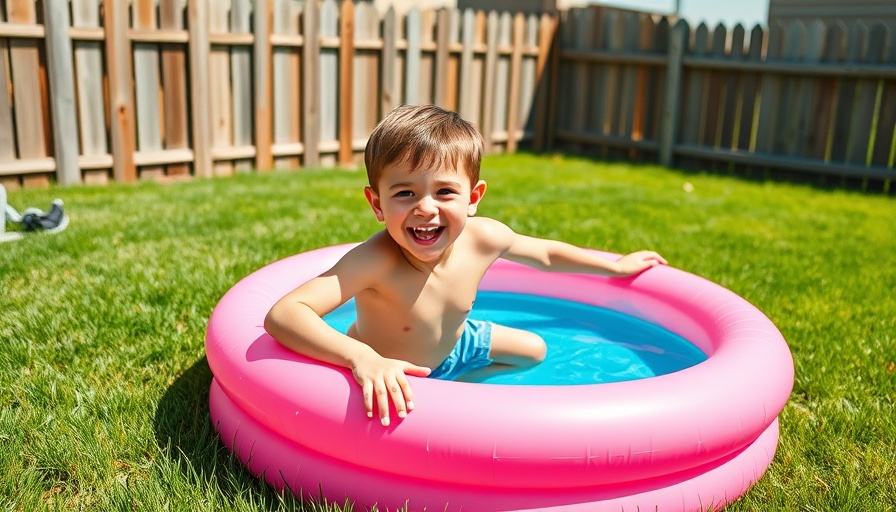
Understanding the Myths Surrounding UV Exposure and Tanning
In a world where sun-kissed skin is often viewed as a beauty ideal, the message is clear: a safe tan is a myth. The insights shared in the video, As a derm, I can't stress this enough: there is no such thing as a safe tan from UV exposure!, bring forth critical information regarding skin health and the science of dermatology. The key takeaway? Any tan signals damaged skin, raising several health concerns that we need to discuss, especially for our audience of informed adults focused on evidence-based skincare.
In As a derm, I can't stress this enough: there is no such thing as a safe tan from UV exposure!, the discussion dives into the significant health risks of tanning, exploring key insights that sparked deeper analysis on our end.
The Reality of Tanning and UV Damage
Tanning occurs when skin cells produce more melanin in reaction to UV radiation, a response that aims to protect the deeper layers of the skin. However, whether from the sun or tanning beds, that exposure increases the risk of skin cancer, premature aging, and other harmful effects. Understanding this can help people appreciate the need for UV protection—not just during summer days on the beach but year-round. As social influencers and professionals, we must lead the conversation on safe skincare practices.
Common Misconceptions About Tanning
Many believe that a 'base tan' can protect them from sunburn—a notion entirely unfounded by scientific evidence. Instead, a tan is an indicator that skin has already sustained an injury. This leads to questions about various tanning products and their effectiveness. Are self-tanning lotions any safer? While they may not expose you to UV rays directly, they don't eliminate the need for sunscreen. The tan they produce is cosmetic, and proper UV protection remains essential.
Real Risks of UV Exposure: Skin Cancer and Beyond
Recent data has illuminated the alarming rise in skin cancer cases, particularly melanoma, the deadliest form of skin cancer. The American Academy of Dermatology states that 1 in 5 Americans will develop skin cancer in their lifetime. The most significant risk factor remains UV exposure, both from natural sunlight and artificial sources like tanning beds. Drawing attention to these statistics is vital to ensure our peers make informed choices about their skin health.
Taking Action: Effective Sun Protection Strategies
Recognizing the hazards associated with UV exposure is step one. Step two involves adopting effective sun protection strategies. Here are essential tips:
- Use Broad-Spectrum Sunscreen: Choose a broad-spectrum sunscreen with at least SPF 30, applying it generously and reapplying every two hours, especially after sweating or swimming.
- Seek Shade: When the sun is at its peak, usually between 10 a.m. and 4 p.m., shade becomes your ally. This is particularly crucial for outdoor activities.
- Wear Protective Clothing: Opt for long sleeves, lightweight pants, and a wide-brimmed hat, and consider UV-protective clothing for maximum safety.
- Regular Skin Checks: Conduct monthly self-exams of your skin and see a dermatologist annually to catch any changes early.
The Future of Skincare: Beyond the Tan
The skincare industry is continually evolving, with innovative products that prioritize skin health over superficial beauty standards. The increasing awareness about the dangers of UV exposure has led to a shift in how brands market products: from highlighting tanning achievements to promoting sun-safe alternatives. As consumers, we should align our purchasing decisions with brands that prioritize health and wellbeing over tan lines.
Inspirational Perspectives: Quotes from Experts
Leading dermatologists around the world echo the sentiment of prioritizing skin health over aesthetics. Dr. Elizabeth Hale, a prominent dermatologist, emphasizes, "The healthiest skin is the skin that is protected—there’s no beauty in the harm done to achieve a color that can lead to long-term health issues." These insights remind us of our responsibility in advocating for better skincare practices.
In summary, the notion of a safe tan is not only misleading but also dangerous. As engaged citizens, particularly those of us active in professional or social circles, we are in a position to champion evidence-based skincare practices and debunk harmful myths surrounding tanning.
As you consider your skincare routine, remember that investing in your skin’s health today will reward you in the future. Let’s continue to educate ourselves and others about the realities of UV exposure and embrace practices that protect our skin for years to come.
 Add Row
Add Row  Add
Add 




Write A Comment